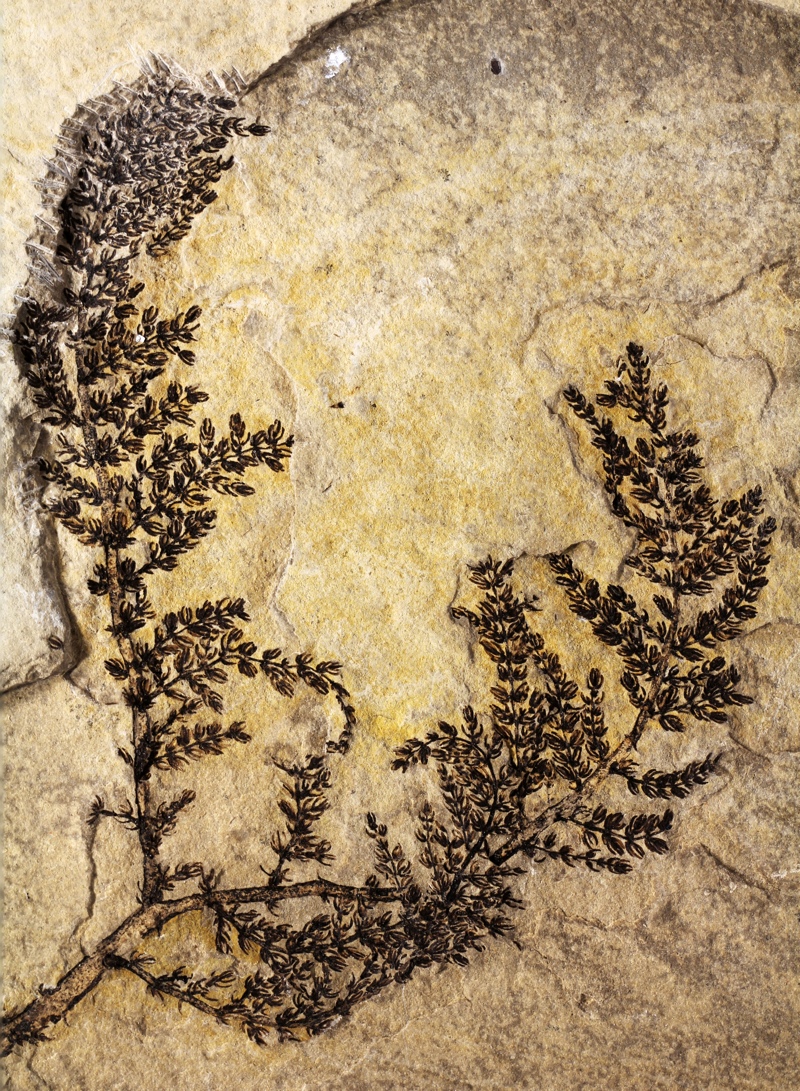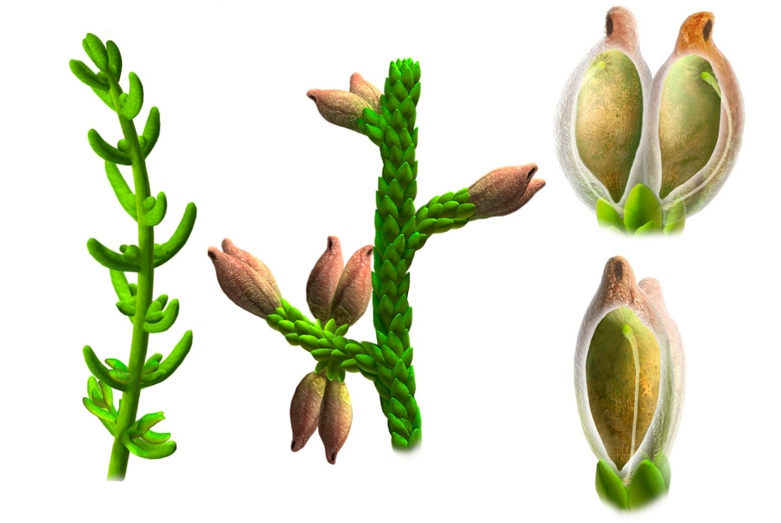World's First Flowers May Have Bloomed Underwater

A fluffy, frondy plant that wouldn't look out of place in a lake today was one of the oldest flowering plants on Earth, new research finds.
Montsechia vidalii wouldn't have made for a great bouquet; it consisted of long shoots and small leaves, and its flowers lacked anything as elaborate as petals. But at 125 million to 130 million years old, this aquatic plant is a window into the early days of angiosperms, or plants with flowers, said David Dilcher, a paleobotanist at Indiana University.
"It's a very, very early experiment or divergence in the sexual reproduction of flowering plants," Dilcher told Live Science. [See photos of the ancient flowering plant]
Ancient plants
Montsechia lived in lakes in what is now northeastern Spain. Fossil fragments of this ancient plant have been found in limestone in the Pyrenees and Iberian Mountains for more than a century, but no one had ever systematically analyzed the entire species.
Dilcher and his colleagues had more than 1,000 specimens at their disposal. They dated the fossils using another group of plants, called Ceratophyllum, which are found in the same rock. In other areas, Ceratophyllum fossils are found in the same rock layers as shelled animals called ammonites. And ammonite evolution is so well understood that researchers use the creatures as a kind of benchmark to pinpoint the age of the rocks where they're found.
The dating pegged the Montsechia fossils as living in the early Cretaceous period, contemporary with the longneck Brachiosaurus. The plant might have shared territory with dinosaurs like the 60-foot-long (18 meters) Aragosaurus, a sauropod that left fossils in northeastern Spain.
Sign up for the Live Science daily newsletter now
Get the world’s most fascinating discoveries delivered straight to your inbox.

This puts Montsechia among the oldest flowering plants ever discovered, Dilcher said. There is an aquatic plant from northeastern China called Archaefructus sinensis that dates back to about the same time, but that plant likely sent shoots up above the water to reproduce. Montsechia appears to have relied on water currents alone to move its pollen about, conducting its entire life underwater, the researchers said.
For that reason, the plant doesn't look too different from its modern relatives, a group called Ceratophyllum. These fuzzy aquatic plants, also called coontails, are found worldwide and are popular for aquariums.
"It's not had the drastic changes either in pollination insects or animals or in its climate and environment that land plants have had, so this long lineage has just persisted, hidden away under the water," he said. One species of Ceratophyllum, he said, has persisted for an incredible 45 million years.
Early adopters
This latest look at Montsechia opens up new questions about the first flowering plants, Dilcher said.
Research suggests that these plants evolved in the Jurassic period on land, in tandem with an explosion in the evolution of insects, which could act as pollinators for the new plants. The ability to "outcross" genes, or reproduce with other individuals, was a huge evolutionary boost, Dilcher said. Some angiosperms, like Montsechia, then crept into the water, using currents instead of insects to reproduce.
"The plants were very inventive, and it demonstrates how important the outcrossing, the genetics were in the evolution of early flowering plants," Dilcher said.
Follow Stephanie Pappas on Twitter and Google+. Follow us @livescience, Facebook & Google+. Original article on Live Science.

Stephanie Pappas is a contributing writer for Live Science, covering topics ranging from geoscience to archaeology to the human brain and behavior. She was previously a senior writer for Live Science but is now a freelancer based in Denver, Colorado, and regularly contributes to Scientific American and The Monitor, the monthly magazine of the American Psychological Association. Stephanie received a bachelor's degree in psychology from the University of South Carolina and a graduate certificate in science communication from the University of California, Santa Cruz.









